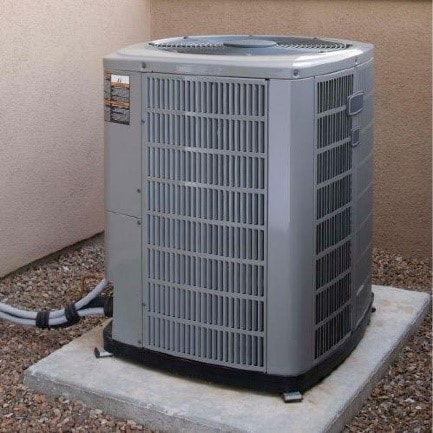In the world of Heating, Ventilation, and Air Conditioning (HVAC), staying informed and up-to-date with the latest trends, technologies, and techniques is essential. HVAC is vital for ensuring comfortable indoor environments in residential, commercial, and industrial settings, irrespective of external weather conditions. As such, a plethora of blog platforms have emerged as key informational resources, sharing insights, innovative ideas, and practical advice on HVAC systems. This article explores the significance of blogs in the HVAC industry, examining how they aid both professionals and consumers in understanding and navigating this complex field.
1. Introduction to HVAC Blogs
HVAC blogs are online platforms where experts, enthusiasts, and companies share their knowledge and experiences related to
HVAC systems. These blogs vary widely in their scope and target audience, ranging from technical advice for professionals to simple maintenance tips for homeowners. The primary goal is to educate, inform, and sometimes even entertain readers while promoting best practices and new technologies in the industry.
2. Types of HVAC Blogs
HVAC blogs can be categorized broadly into professional
Blogs on HVAC, educational blogs, company blogs, and personal blogs.
- Professional Blogs: These are often written by HVAC engineers, technicians, and industry experts. They delve into technical details, explore new research, and discuss intricate aspects of HVAC design, installation, and maintenance.
- Educational Blogs: Aimed at both upcoming professionals and students, these blogs focus on teaching the principles of HVAC systems, including thermodynamics, fluid mechanics, and system design.
- Company Blogs: Many HVAC manufacturing and service companies run blogs that focus on their products and services, case studies, customer education, and industry news.
- Personal Blogs: Run by enthusiasts or DIY experts, these blogs share personal experiences, household tips, and practical advice for troubleshooting and maintaining HVAC systems at home.
3. Key Topics Covered in HVAC Blogs
The range of topics covered in HVAC blogs is vast, but some of the core areas include:
- Installation Techniques: Detailed guides and discussions on the best practices for installing various types of HVAC systems.
- Maintenance Tips: Advice on routine maintenance to ensure that HVAC systems run efficiently and have a longer lifespan.
- Product Reviews: Comparative analysis and reviews of new and existing HVAC products, helping readers make informed purchasing decisions.
- Technological Advances: Information on the latest innovations, such as smart thermostats, geothermal heating systems, and IoT integration in HVAC systems.
- Energy Efficiency: Tips on reducing energy consumption and enhancing the environmental sustainability of HVAC systems.
- Health and Safety Regulations: Updates on the latest health and safety guidelines and how they impact HVAC design and usage.
- Market Trends: Insight into how economic, environmental, and technological trends are shaping the HVAC industry.
4. Benefits of HVAC Blogs
- Knowledge Sharing: Blogs serve as a platform for sharing valuable knowledge, helping professionals stay current with industry standards and best practices.
- Skill Enhancement: For professionals, these blogs offer continuous learning opportunities, which is crucial in a technically evolving field like HVAC.
- Consumer Education: HVAC blogs help consumers understand their systems better, making them more knowledgeable about maintenance practices and more confident in their interactions with service providers.
- Community Building: Blogs often foster a sense of community among readers, who can interact through comments, share experiences, and even solve problems collectively.
- Marketing and Outreach: For companies, blogs are an effective tool for marketing and customer engagement, establishing authority in the industry, and improving search engine rankings through fresh, relevant content.
5. Challenges Faced by HVAC Bloggers
While HVAC blogs are beneficial, they also face certain challenges:
- Technical Complexity: Making complex technical content understandable and engaging can be difficult, especially when the target audience is broad.
- Content Freshness: Regularly updating blog content to reflect the latest trends, technologies, and regulations can be resource-intensive.
- Audience Engagement: Continuously engaging a diverse audience, from industry professionals to casual readers, requires a dynamic content strategy.
- Accuracy and Reliability: Providing accurate and reliable information is crucial, especially when dealing with systems that affect safety and comfort.
6. Best Practices for Creating and Running an HVAC Blog
- Understanding the Audience: Knowing who the readers are (professionals, homeowners, students) can guide the content style, depth, and topics.
- Regular Updates: Consistently posting new content not only keeps the audience engaged but also helps in maintaining a higher search engine ranking.
- Engagement through Multimedia: Incorporating videos, infographics, and podcasts can make complex topics more accessible and interesting.
- Interactive Content: Encouraging reader participation through comments, polls, and social media can boost engagement and loyalty.
- Professional Networking: Collaborating with other experts and industry influencers can enhance content credibility and reach.
7. Notable HVAC Blogs to Follow
To get a sense of the variety and depth of content available, here are a few notable HVAC blogs:

- HVAC.com: Features a mix of educational content, product reviews, and practical advice aimed at both professionals and homeowners.
- The ACHR NEWS: Offers up-to-date information on HVAC industry news, regulatory changes, and technical advancements.
- Contracting Business: Provides high-quality articles on HVAC design, effective management practices, and sales/marketing insights.
- Green Building Advisor: Focuses on energy-efficient building practices, including the use of innovative HVAC technologies.